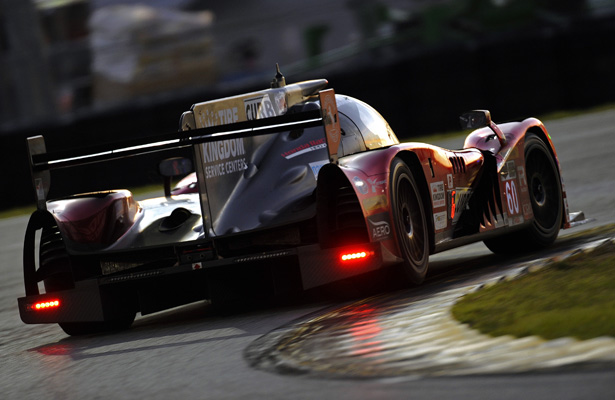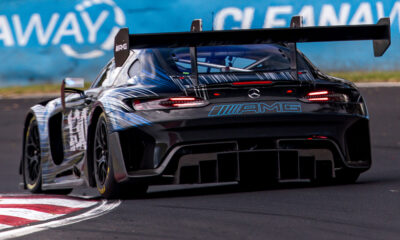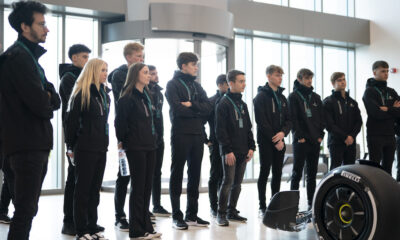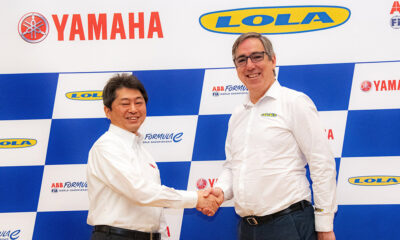
Photo: IMSA
Steps towards the new global LMP2 regulations continues this week, as manufacturers meet with representatives from the ACO, FIA and IMSA in Daytona Beach, Fla. today to begin finalizing the rulebook for the new-for-2017 platform.
According to ACO Sporting Director Vincent Beaumesnil, who spoke with Sportscar365 following last weekend’s TUDOR United SportsCar Championship season-opening Rolex 24 at Daytona, specific details are expected to be finalized as the group works towards the release of the regulations later this year.
“The first meeting in September was a bit disappointing,” Beaumesnil told Sportscar365. “Nobody was really ready to commit to some views and opinions.
“We’ve been working on options we can share [today]. So the target is to leave the meeting room after having a discussion of the real options on the table, collect the opinion of the manufacturers and then be able to decide.”
One of the major talking points in the 2017 regulations has been a difference in philosophy between the ACO’s privateer-driven LMP2 class and IMSA’s desire to see manufacturer involvement in its category and a push for brand-specific bodywork on the new cars.
Beaumesnil feels some sort of compromise could be made that could keep the majority of the platform the same for the TUDOR Championship and the ACO-sanctioned championships such as the FIA World Endurance Championship, European and Asian Le Mans Series.
“Our hope at the ACO is to achieve a common set of rules, agreed by everyone with a set of exceptions that would help the targets of American racing, which for sure is a bit different from us,” he said. “Because we want privateers and they want a mix of privateers and manufacturers.
“The good sign is that we share the same view on what kind of performance we want, what kind of costs target we want to achieve. We have set several targets and we agree with that. There are positive signs. But it’s still too early.”
Cost reduction is another topic, which not necessarily impacts the price range of a new car, but possibly imposing restrictions on the price of spares and other related costs that add up throughout an entire season.
“We believe that reducing the costs is not necessarily about reducing the sale price of the car. It’s running the budget of [the entire] season,” Beaumesnil said. “For that, you have many parameters to play with.
“We want stronger engines with longer life. It’s possible to achieve it even with more power and more performance. Then you can play with costs stability with the rules, management with potential evolutions of the cars and less maintenance and less people.
“If you want to reduce costs, you cannot press on one button. You have to press on many different buttons. That’s how we want to achieve it.”
Despite a proposed reduction in costs, the performance level of the new LMP2s are expected to increase, by as much as 60 horsepower, or roughly three seconds per lap at Le Mans.
Beaumesnil said this has been made possible due to the increased performance levels of LMP1, while plans are also in the works to see a slight boost in GTE speeds in the release of its new regulations for 2016.
The prospects of seeing U.S. manufacturers re-enter the LMP2 market is also an exciting development, according to the ACO tech chief, as both Riley Technologies and Coyote Cars have already announced intentions of building cars for the new platform.
Along with existing involvement from Japanese-based constructor Dome, the platform is expected to have a true global reach by 2017.
“It’s very important,” Beaumesnil said. “This is the meeting where we must evaluate what will be rule we will follow for the next steps.
“The IMSA and ACO Presidents want [LMP2] to succeed. That’s a good sign. The FIA, ACO and IMSA, we now have this target.
“For sure, we definitely want to achieve that. The next step is what options do we have and what manufacturers think of these options. Then we’ll see.”
Beaumesnil said he expects a set of precise guidelines to be defined by June, in time for the FIA World Motor Sport Council meeting, with a proper set of regulations finalized before the end of this year.

























